Abundance: common
How: stem cooked, seeds roasted
Where: sunny fields, borders
When: spring, summer, fall
Nutritional Value: contains carotenoids
Dangers: WARNING: RECENT RESEARCH INDICATES CERTAIN COMPOUNDS IN DODDER CAN CAUSE DAMAGE OVER TIME. I NO LONGER RECCOMEND EATING THIS PLANT!!
Dodder covering plants along Spring creek.
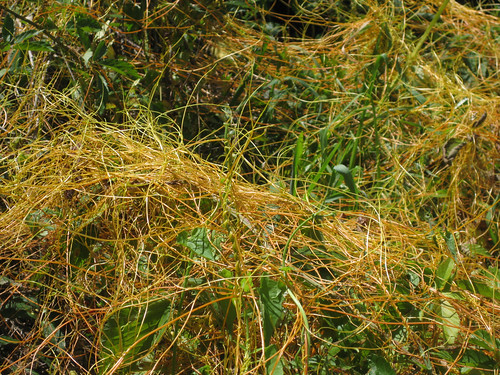
Close-ups of dodder vines.
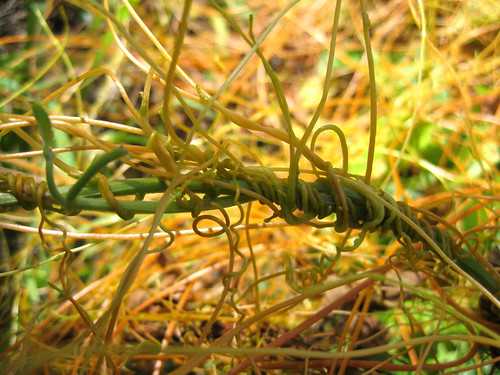
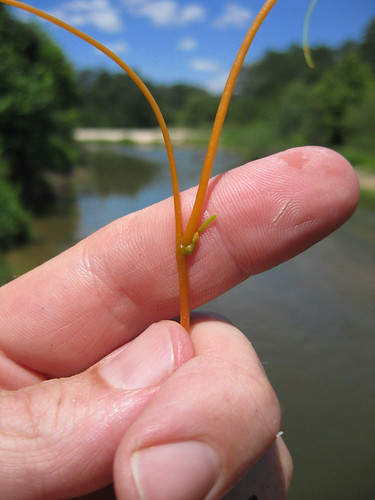
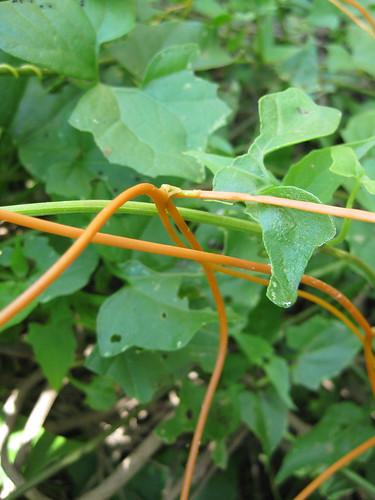
Close-up of dodder vine tip.
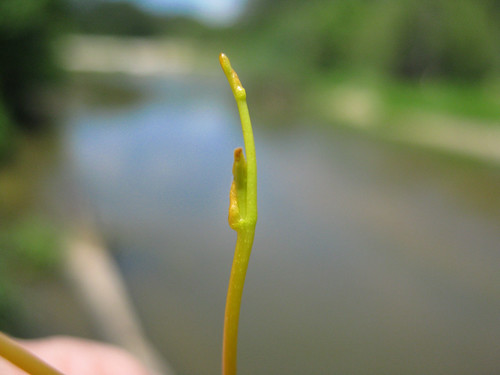
Texas distribution, attributed to U. S. Department of Agriculture. The marked counties are guidelines only. Plants may appear in other counties, especially if used in landscaping.

North American distribution, attributed to U. S. Department of Agriculture.
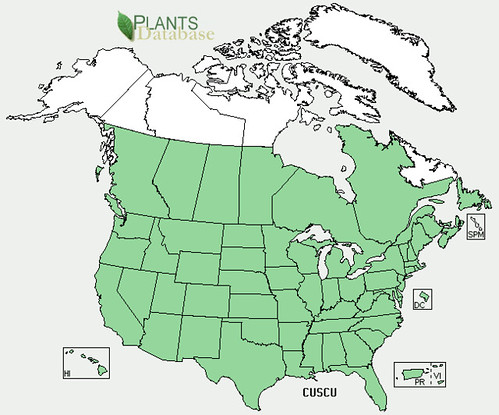
Dodder vines are a fascinating example of plant parasitism. They contain only minimal amounts of chlorophyl and survive by sucking all their necessary nutrients from host plants. Chemical receptors on the dodder vine allow it to "smell" he presence of preferred host plants, causing the dodder to grow towards it's host like a slow, orange plant vampire.
In light of dodder's orange color it should not be surprising that it contains B-carotene and other carotenoids.
Sorry, I couldn't resist. I've been working too hard lately.
While dodder vines are rich in carotenoids, there is little in literature about eating these it.
Dodder seeds supposedly have medicinal properties according to Chinese and Japanese herbal lore. Seeds from the Asian dodder Cuscuta japonica are used as an anti-aging drug, reversing many of the common weaknesses brought on in old age, especially for men. Western medicines have not confirmed any of these effects.
Link to scientific paper about dodder carotenoids.
Because dodder absorbs many chemicals from its host plants, it itself can become toxic. Only eat dodder harvested from plants you can positively identify as safe to eat!
Buy my book! Outdoor Adventure Guides Foraging covers 70 of North America's tastiest and easy to find wild edibles shown with the same big pictures as here on the Foraging Texas website.

